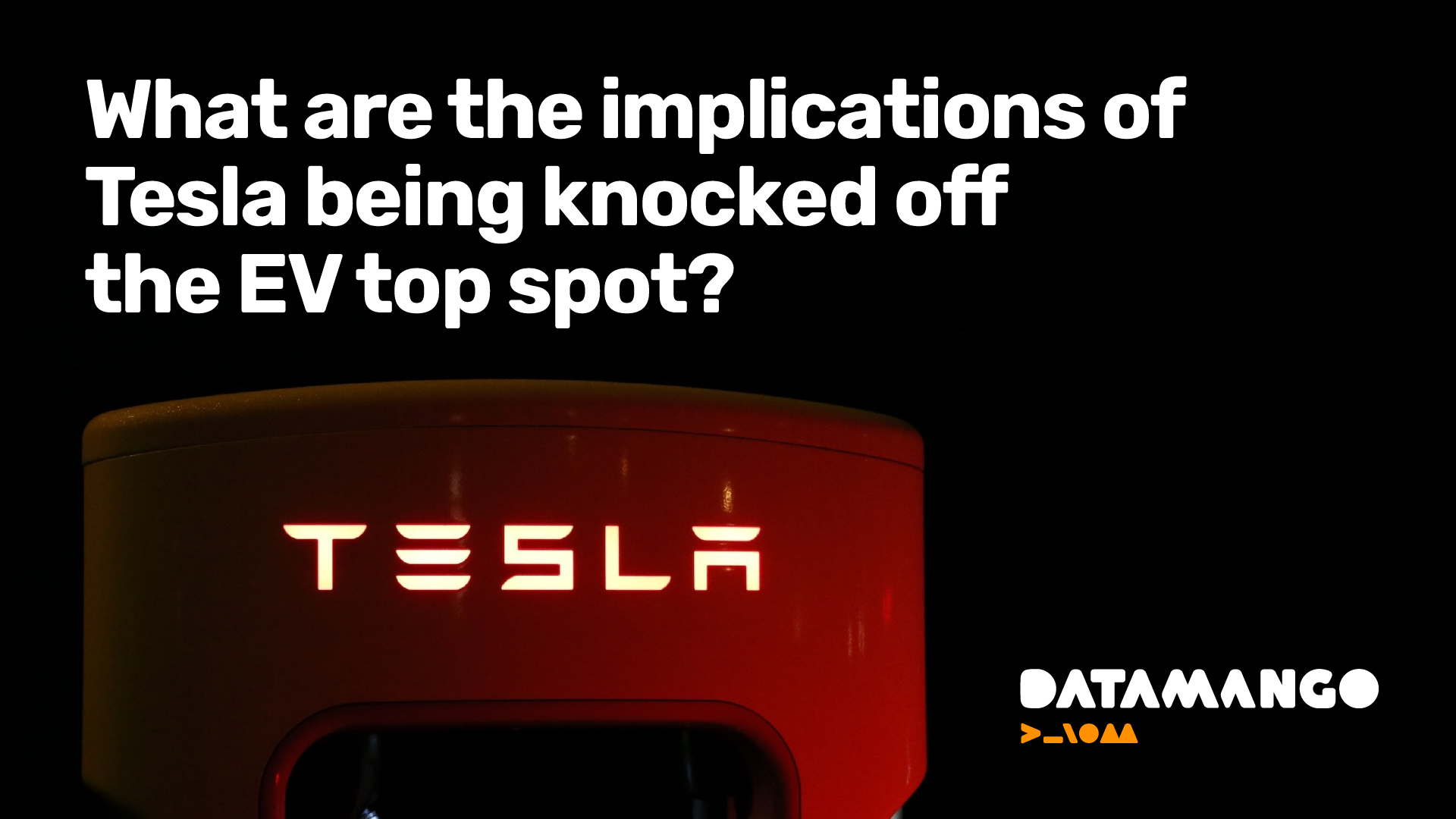
What are the implications of Tesla being knocked off the EV top spot?

by Dave Westbrook,
07-Jul-2022
The Warren Buffet-backed vehicle manufacturer BYD Company Ltd (SEHK: 1211) is now the largest electric vehicle (EV) producer in the world, overtaking Tesla (Nasdaq: TSLA). The publicly-listed Chinese conglomerate has sold more than two million vehicles around the world since its first model, the F3DM, was released in 2013.
In the first half of 2022, BYD sold over 630,000 electric or plug-in hybrid vehicles. That number represents a 325% increase from the same time the previous year and is split evenly between battery-powered EVs and plug-in hybrids (PHEVs). June was a particularly fruitful month, with nearly 134,000 vehicles sold.
Comparing to Tesla—who sold around 560,000 vehicles during the same period—this represents a dramatic shift in the world of sustainable vehicle sales.
Tesla was quick to pin it’s sales struggles on supply chain issues and manufacturing challenges as a result of COVID-19—Tesla had to shutter its Shanghai “Gigafactory” for at least two weeks.
A major shift...
Tesla’s factory shutdown comes off the back of a 98% drop in Chinese sales—one of their largest markets—and bookends a shift towards an expanded manufacturing base across the EV market.
Other than the obvious financial impact, this shift marks a key moment in the EV market life-cycle. The market is clearly diversifying off the back a period of rapid growth in recent years, with predictions of a compound annual growth rate (CAGR) of 19% and market value of £297.23 billion by 2028.
One of the major drivers for this growth is the adoption of policies at the national level to phase out traditional petrol and diesel powered vehicles. The UK for example has targeted 2030 to end the sale of new cars powered by fossil fuels, making it the fastest country in the G7 to do so.
Benefits of widespread EV adoption
The UK’s 2030 target will reportedly support 169,000 jobs, with nearly £500 million earmarked to help the migration. This is a key moment in the transition to a “green” economy—a major player on the global stage showing an early hand in the race to net zero.
The economic impact of a green transition is yet to be fully understood, but a recent report from the London School of Economic (LSE) suggests increased employment in:
“Construction and operation and maintenance of EV charging infrastructure, production and R&D related to raw materials for electric vehicles, component production, electric vehicle assembly, [and] charging infrastructure.”
Jobs for a strong and sustainable recovery from Covid-19 (LSE, 2020)
There are challenges to this opportunity though. There are low numbers of EV charging points per kilometre of road in the UK, and the per capita infrastructure is also limited. This, however, can also act as a catalyst for increased investment and job creation.
EV driven innovation
With a predicted 135 million electric vehicles on the roads across the world in 2035, it's clear that huge expansions of existing infrastructure and related technical innovations will be required to cater for the increase. Here are some of the significant eco-innovations to watch out for in the coming years:
Wireless charging
We're all familiar with wireless charging for our personal electronic devices. Now we're seeing increased R&D into deploying similar inductive charging technology at a larger scale.
Nottingham City Council's Wireless Charging Electric Taxis (WiCET) project is a £3.4 million scheme to deploy wireless charging tech at taxi ranks in the city is one example. It is paving the way for expanded schemes to allow multiple vehicles to charge from one source, and is a potential solution for those without driveways to adopt EVs.
Turning EV drivers into "prosumers"
Smart charging, which allows for drivers to manage the rates and timing of charging their EVs, is increasing in popularity. This helps the national grid and avoid imbalances, such as everyone charging their vehicles overnight and disrupting power supplies.
The extension to this is vehicle-to-grid charging, where an EVs vehicle's battery is used to send it's stored power to the grid to cope with increased demand, such as Powerloop from Octopus Energy. This creates a reciprocal relationship between traditional consumers and producers of energy, and helps reduce energy bills and promote EV drivers as "prosumers".
Integrating charging points with existing infrastructure
There's no avoiding it—charging points take up room. But what if we could add charging points to lamp posts? Or have them pop up from underground? Well, this is also being trialled across the UK. Projects across the country are being funded by the UK Government in an effort to rapidly expand EV charging infrastructure.
One thing is for sure—the prospective eco-innovation is exciting.
If you'd like to speak to the Datamango team about eco-innovation, drop your email below...




